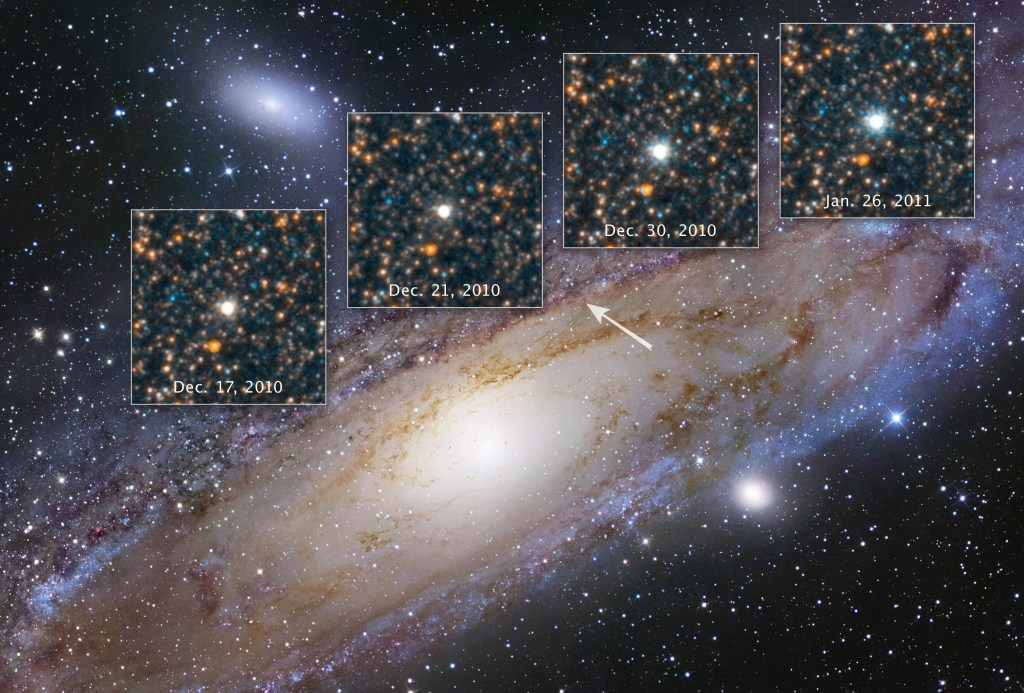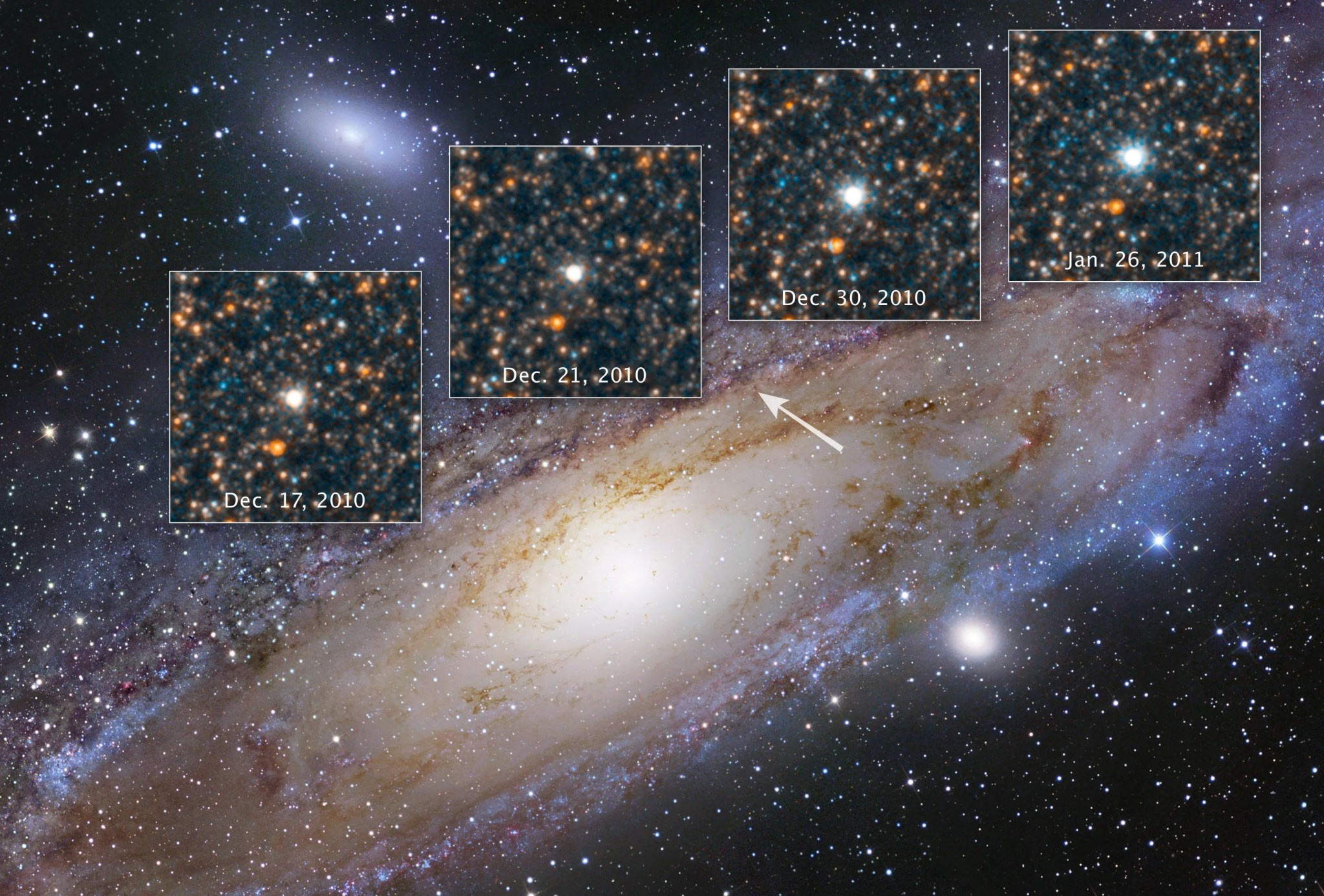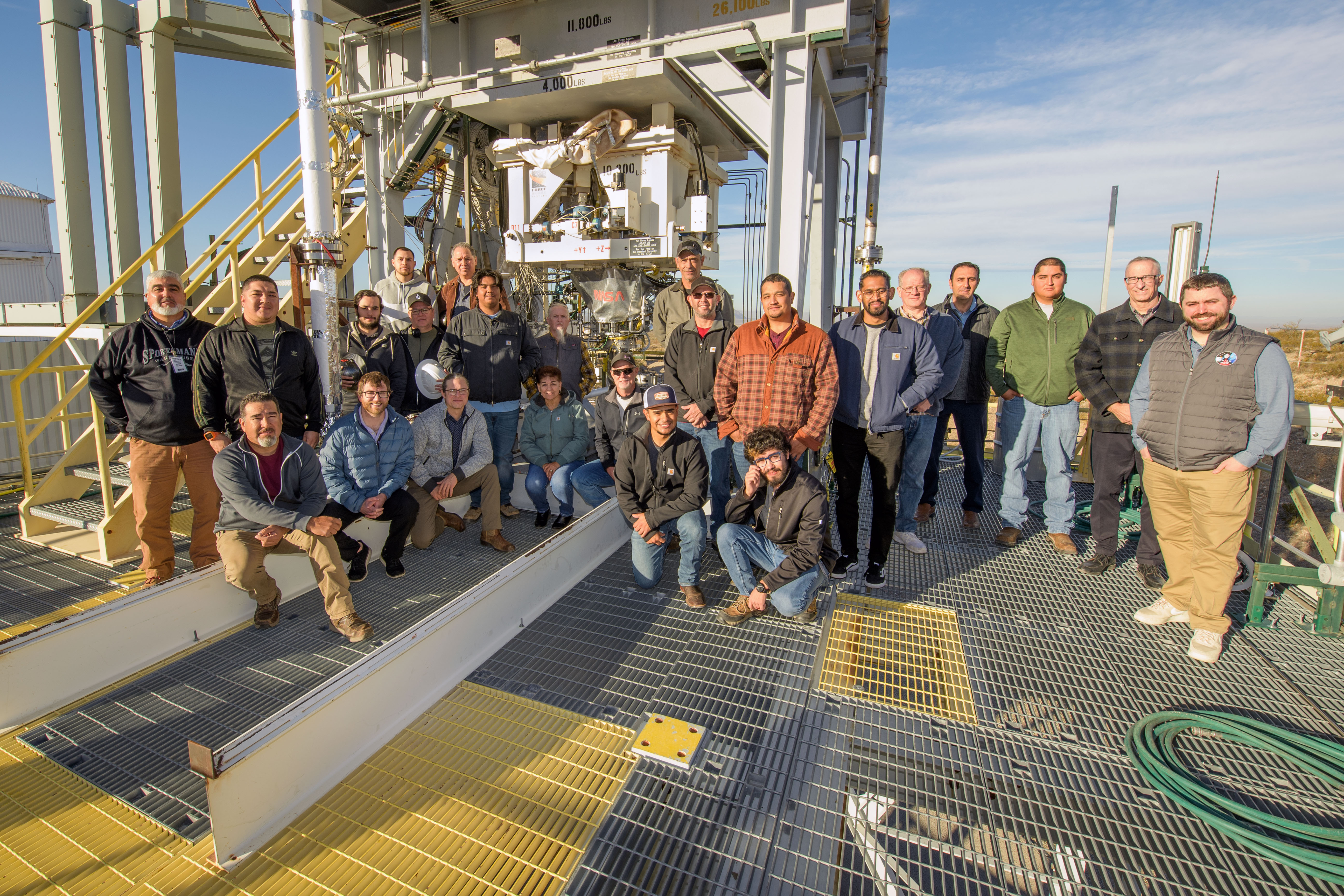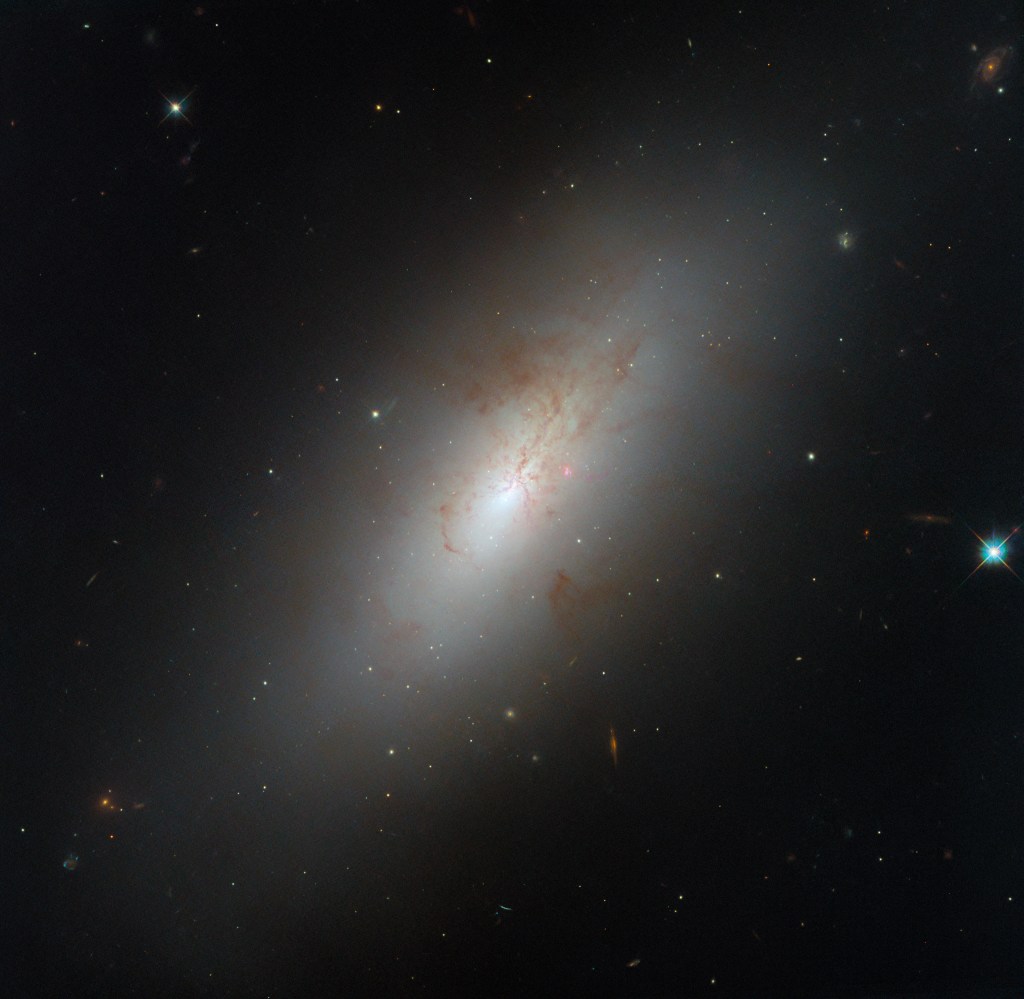NASA Celebrates Edwin Hubble’s Discovery of a New Universe
For humans, the most important star in the universe is our Sun. The second-most important star is nestled inside the Andromeda galaxy. Don’t go looking for it — the flickering star is 2.2 million light-years away, and is 1/100,000th the brightness of the faintest star visible to the human eye. Yet, a century ago, its […]

NASA Celebrates Edwin Hubble’s Discovery of a New Universe

NASA, ESA, Hubble Heritage Team (STScI/AURA); Acknowledgement: R. Gendler
For humans, the most important star in the universe is our Sun. The second-most important star is nestled inside the Andromeda galaxy. Don’t go looking for it — the flickering star is 2.2 million light-years away, and is 1/100,000th the brightness of the faintest star visible to the human eye.
Yet, a century ago, its discovery by Edwin Hubble, then an astronomer at Carnegie Observatories, opened humanity’s eyes as to how large the universe really is, and revealed that our Milky Way galaxy is just one of hundreds of billions of galaxies in the universe ushered in the coming-of-age for humans as a curious species that could scientifically ponder our own creation through the message of starlight. Carnegie Science and NASA are celebrating this centennial at the 245th meeting of the American Astronomical Society in Washington, D.C.
The seemingly inauspicious star, simply named V1, flung open a Pandora’s box full of mysteries about time and space that are still challenging astronomers today. Using the largest telescope in the world at that time, the Carnegie-funded 100-inch Hooker Telescope at Mount Wilson Observatory in California, Hubble discovered the demure star in 1923. This rare type of pulsating star, called a Cepheid variable, is used as milepost markers for distant celestial objects. There are no tape-measures in space, but by the early 20th century Henrietta Swan Leavitt had discovered that the pulsation period of Cepheid variables is directly tied to their luminosity.
Many astronomers long believed that the edge of the Milky Way marked the edge of the entire universe. But Hubble determined that V1, located inside the Andromeda “nebula,” was at a distance that far exceeded anything in our own Milky Way galaxy. This led Hubble to the jaw-dropping realization that the universe extends far beyond our own galaxy.
In fact Hubble had suspected there was a larger universe out there, but here was the proof in the pudding. He was so amazed he scribbled an exclamation mark on the photographic plate of Andromeda that pinpointed the variable star.

As a result, the science of cosmology exploded almost overnight. Hubble’s contemporary, the distinguished Harvard astronomer Harlow Shapley, upon Hubble notifying him of the discovery, was devastated. “Here is the letter that destroyed my universe,” he lamented to fellow astronomer Cecilia Payne-Gaposchkin, who was in his office when he opened Hubble’s message.
Just three years earlier, Shapley had presented his observational interpretation of a much smaller universe in a debate one evening at the Smithsonian Museum of Natural History in Washington. He maintained that the Milky Way galaxy was so huge, it must encompass the entirety of the universe. Shapley insisted that the mysteriously fuzzy “spiral nebulae,” such as Andromeda, were simply stars forming on the periphery of our Milky Way, and inconsequential.
Little could Hubble have imagined that 70 years later, an extraordinary telescope named after him, lofted hundreds of miles above the Earth, would continue his legacy. The marvelous telescope made “Hubble” a household word, synonymous with wonderous astronomy.
Today, NASA’s Hubble Space Telescope pushes the frontiers of knowledge over 10 times farther than Edwin Hubble could ever see. The space telescope has lifted the curtain on a compulsive universe full of active stars, colliding galaxies, and runaway black holes, among the celestial fireworks of the interplay between matter and energy.
Edwin Hubble was the first astronomer to take the initial steps that would ultimately lead to the Hubble Space Telescope, revealing a seemingly infinite ocean of galaxies. He thought that, despite their abundance, galaxies came in just a few specific shapes: pinwheel spirals, football-shaped ellipticals, and oddball irregular galaxies. He thought these might be clues to galaxy evolution – but the answer had to wait for the Hubble Space Telescope’s legendary Hubble Deep Field in 1994.
The most impactful finding that Edwin Hubble’s analysis showed was that the farther the galaxy is, the faster it appears to be receding from Earth. The universe looked like it was expanding like a balloon. This was based on Hubble tying galaxy distances to the reddening of light — the redshift – that proportionally increased the father away the galaxies are.
The redshift data were first collected by Lowell Observatory astronomer Vesto Slipher, who spectroscopically studied the “spiral nebulae” a decade before Hubble. Slipher did not know they were extragalactic, but Hubble made the connection. Slipher first interpreted his redshift data an example of the Doppler effect. This phenomenon is caused by light being stretched to longer, redder wavelengths if a source is moving away from us. To Slipher, it was curious that all the spiral nebulae appeared to be moving away from Earth.
Two years prior to Hubble publishing his findings, the Belgian physicist and Jesuit priest Georges Lemaître analyzed the Hubble and Slifer observations and first came to the conclusion of an expanding universe. This proportionality between galaxies’ distances and redshifts is today termed Hubble–Lemaître’s law.
Because the universe appeared to be uniformly expanding, Lemaître further realized that the expansion rate could be run back into time – like rewinding a movie – until the universe was unimaginably small, hot, and dense. It wasn’t until 1949 that the term “big bang” came into fashion.
This was a relief to Edwin Hubble’s contemporary, Albert Einstein, who deduced the universe could not remain stationary without imploding under gravity’s pull. The rate of cosmic expansion is now known as the Hubble Constant.
Ironically, Hubble himself never fully accepted the runaway universe as an interpretation of the redshift data. He suspected that some unknown physics phenomenon was giving the illusion that the galaxies were flying away from each other. He was partly right in that Einstein’s theory of special relativity explained redshift as an effect of time-dilation that is proportional to the stretching of expanding space. The galaxies only appear to be zooming through the universe. Space is expanding instead.

After decades of precise measurements, the Hubble telescope came along to nail down the expansion rate precisely, giving the universe an age of 13.8 billion years. This required establishing the first rung of what astronomers call the “cosmic distance ladder” needed to build a yardstick to far-flung galaxies. They are cousins to V1, Cepheid variable stars that the Hubble telescope can detect out to over 100 times farther from Earth than the star Edwin Hubble first found.
Astrophysics was turned on its head again in 1998 when the Hubble telescope and other observatories discovered that the universe was expanding at an ever-faster rate, through a phenomenon dubbed “dark energy.” Einstein first toyed with this idea of a repulsive form of gravity in space, calling it the cosmological constant.
Even more mysteriously, the current expansion rate appears to be different than what modern cosmological models of the developing universe would predict, further confounding theoreticians. Today astronomers are wrestling with the idea that whatever is accelerating the universe may be changing over time. NASA’s Roman Space Telescope, with the ability to do large cosmic surveys, should lead to new insights into the behavior of dark matter and dark energy. Roman will likely measure the Hubble constant via lensed supernovae.
This grand century-long adventure, plumbing depths of the unknown, began with Hubble photographing a large smudge of light, the Andromeda galaxy, at the Mount Wilson Observatory high above Los Angeles.
In short, Edwin Hubble is the man who wiped away the ancient universe and discovered a new universe that would shrink humanity’s self-perception into being an insignificant speck in the cosmos.
The Hubble Space Telescope has been operating for over three decades and continues to make ground-breaking discoveries that shape our fundamental understanding of the universe. Hubble is a project of international cooperation between NASA and ESA (European Space Agency). NASA’s Goddard Space Flight Center in Greenbelt, Maryland, manages the telescope and mission operations. Lockheed Martin Space, based in Denver, also supports mission operations at Goddard. The Space Telescope Science Institute in Baltimore, which is operated by the Association of Universities for Research in Astronomy, conducts Hubble science operations for NASA.
Explore More
Media Contact:
Claire Andreoli (claire.andreoli@nasa.gov)
NASA’s Goddard Space Flight Center, Greenbelt, MD
Ray Villard
Space Telescope Science Institute, Baltimore, MD
What's Your Reaction?



















.jpg?#)



























.JPG?w=1024&h=1024&fit=clip&crop=faces%2Cfocalpoint)







